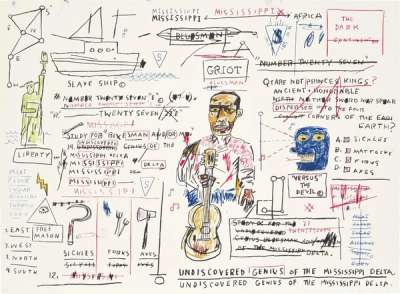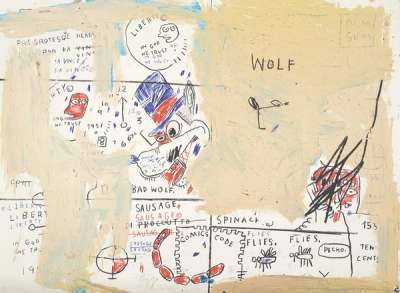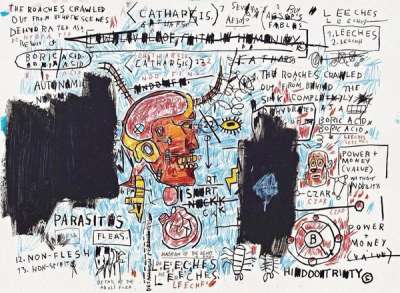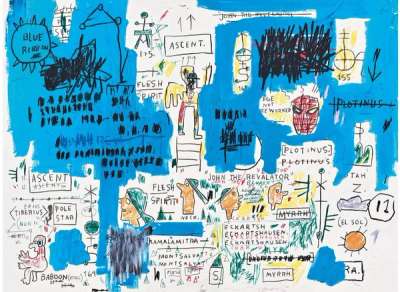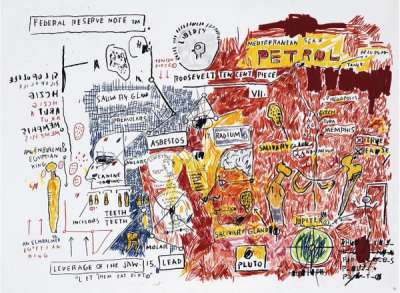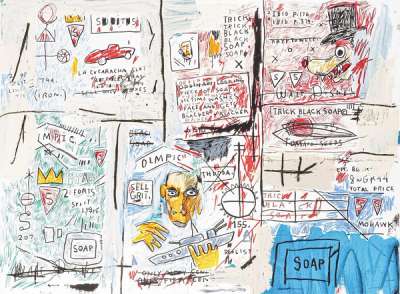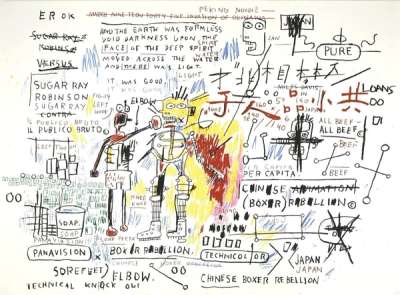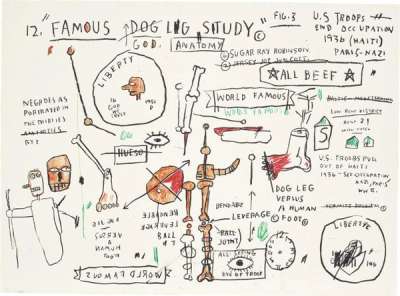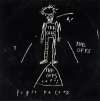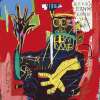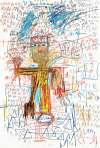Daros
Suite
The paintings by Jean-Michel Basquiat, which the following collected original prints are after, are entitled The Daros Suite of Thirty-Two Drawings due to their housing at the Daros Collection in Zurich. As is characteristic, Basquiat’s mark-making is chaotic, frenzied and childlike; the paintings cover a range of themes, sporting, black excellence, capitalism and anarchy.
Jean-Michel Basquiat Daros Suite For sale
Daros Suite Value (5 Years)
With £209020 in the past 12 months, Jean-Michel Basquiat's Daros Suite series is one of the most actively traded in the market. Prices have varied significantly – from £9483 to £128000 – driven by fluctuations in factors like condition, provenance, and market timing. Over the past 12 months, the average selling price was £41804, with an average annual growth rate of -0.31% across the series.
Daros Suite Market value
Auction Results
| Artwork | Auction Date | Auction House | Return to Seller | Hammer Price | Buyer Paid |
|---|---|---|---|---|---|
 Undiscovered Genius Jean-Michel Basquiat Unsigned Print | 16 Apr 2025 | Christie's New York | £14,450 | £17,000 | £23,000 |
 Daros Suite Jean-Michel Basquiat Unsigned Print | 15 Apr 2025 | Sotheby's New York | £85,000 | £100,000 | £130,000 |
 Boxer Rebellion Jean-Michel Basquiat Unsigned Print | 28 Jan 2024 | SBI Art Auction | £25,500 | £30,000 | £35,000 |
 Leeches Jean-Michel Basquiat Unsigned Print | 9 May 2023 | Bonhams New York | £14,450 | £17,000 | £22,000 |
 Liberty Jean-Michel Basquiat Unsigned Print | 29 Apr 2022 | Wright | £17,850 | £21,000 | £28,000 |
 Wolf Sausage Jean-Michel Basquiat Unsigned Print | 14 Dec 2021 | Cornette de Saint Cyr Brussels | £9,775 | £11,500 | £16,000 |
 Dog Leg Study Jean-Michel Basquiat Unsigned Print | 2 Nov 2021 | Bonhams New York | £11,900 | £14,000 | £18,000 |
 Olympic Jean-Michel Basquiat Unsigned Print | 24 Jun 2021 | Tate Ward Auctions | £11,900 | £14,000 | £19,000 |
Sell Your Art
with Us
with Us
Join Our Network of Collectors. Buy, Sell and Track Demand
Meaning & Analysis
This grouping of prints is based on the series of paintings entitled The Daros Suite of Thirty-Two Drawings, so-called due to their housing at the Daros Collection in Zurich. A range of pertinent themes in Basquiat’s oeuvre are feverishly present in this collection. As is characteristic of Basquiat’s work, the mark making is chaotic, frenzied and childlike, replete with blunt, evocative sketches. What at first appears to be a riotous approach to composition belies a method driven by intention and attention to detail, causing fundamental social contradictions to run feverishly across the images’ surface.
The sporting theme of Olympic and Boxing evoke other images by the artist which pay tribute to Black icons of sport which appear consistently in the artist’s work. In Jesse, which references the iconic athlete who set world records at the 1936 Olympics against the backdrop of Hitler’s Germany, swastikas can be seen alongside labelled diagrams of the athlete’s body, juxtaposing Owens’ athletic greatness with the social context of the rise of Hitler’s politics of white supremacy. This interest in Black celebrity and achievement against a backdrop of racism, hostility and marginalisation is revisited by Basquiat throughout his career, for example in Hollywood Africans.
Another theme which emerges in this collection is that of a struggle between cohesion and anarchy, often centering on animal imagery. In Leeches, depictions of insects and parasites squirm clash anatomical drawings, text referring to chemical substances and figures of authority and power, suggestive of the eternal confrontation between the forces of ‘civilisation’ against an uncontrollable subterranean force. In Wolf Sausage and Dog Leg Study, we see depictions of dogs and canine body parts alongside sausages and other meat products, juxtaposing the perception of dogs as human-like against society’s treatment of animals as foodstuffs. These jarring contrasts are emphasised by the artist’s strident and clashing mark making, causing social contradictions to flash up unapologetically in the viewer’s field of vision.
A similar discussion of the struggle between the idea of societal advancement and an irrepressible and ambiguous reverse force is present in Ascent. Religious imagery alluding to resurrection (including an angelic figure floating upwards) collides with suggestions of death and inevitable destruction, evocative of a tension between earthliness and spirituality. Amongst these culturally-specific references, arrows pointing upwards and downwards acknowledge the same themes in a far more simplistic manner.
